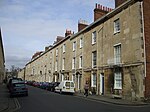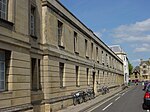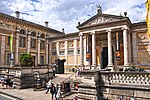Faculty of Asian and Middle Eastern Studies

The Faculty of Asian and Middle Eastern Studies (formerly the Faculty of Oriental Studies), is a subdivision of the University of Oxford. The faculty is engaged in a broad range of research and teaching on modern and historical Asian and Middle Eastern studies, focusing on politics, language, and culture. The faculty's main building is located on Pusey Lane near the Ashmolean Museum and Sackler Library, with some research centres of the faculty having their own buildings elsewhere in Oxford (such as the Middle East Centre based at St. Antony's College, Oxford). The faculty is part of the Humanities Division at the University of Oxford. The faculty has its own library for students and professors, which is both a lending library and a reading room of the Bodleian Library. The faculty was known as the Faculty of Oriental Studies until 1 August 2022, when the name was changed to Faculty of Asian and Middle Eastern Studies. The name was changed due to its perceived colonial implications.
Excerpt from the Wikipedia article Faculty of Asian and Middle Eastern Studies (License: CC BY-SA 3.0, Authors, Images).Faculty of Asian and Middle Eastern Studies
Pusey Place, Oxford City Centre
Geographical coordinates (GPS) Address Nearby Places Show on map
Geographical coordinates (GPS)
| Latitude | Longitude |
|---|---|
| N 51.755833333333 ° | E -1.2608333333333 ° |
Address
Pusey Place
OX1 2LE Oxford, City Centre
England, United Kingdom
Open on Google Maps









